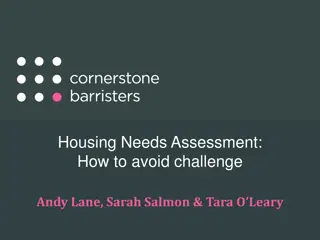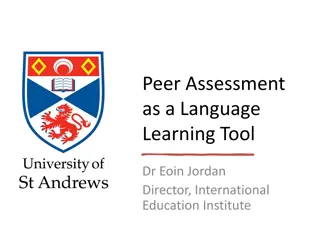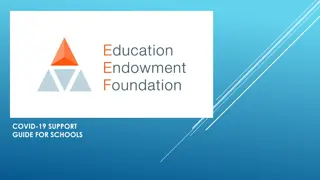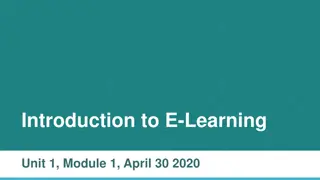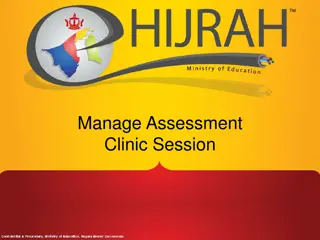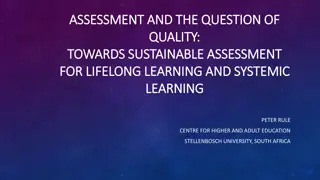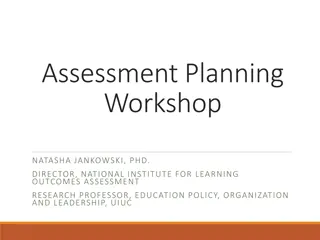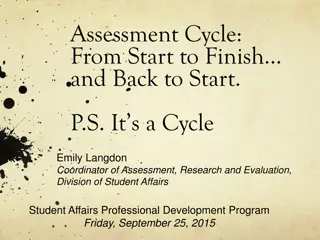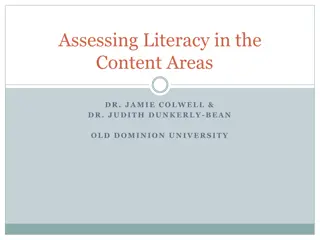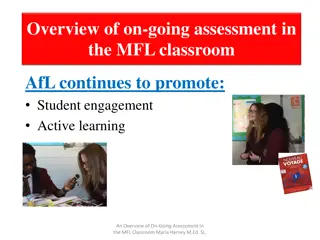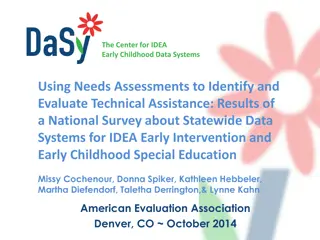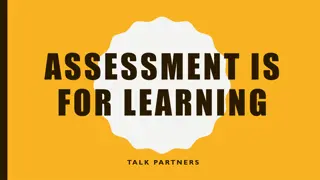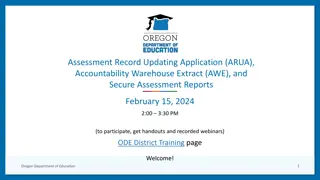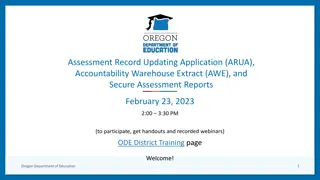Strategies for Effective Learning Needs Assessment in Education
Strategies for learning needs assessment in education are crucial for identifying learner gaps and tailoring instruction. Values include reducing learner stress, preventing repetition, saving time, and enhancing motivation. Methods such as informal conversations, interviews, and questionnaires help gather data to prioritize needs and allocate resources effectively.
Download Presentation

Please find below an Image/Link to download the presentation.
The content on the website is provided AS IS for your information and personal use only. It may not be sold, licensed, or shared on other websites without obtaining consent from the author.If you encounter any issues during the download, it is possible that the publisher has removed the file from their server.
You are allowed to download the files provided on this website for personal or commercial use, subject to the condition that they are used lawfully. All files are the property of their respective owners.
The content on the website is provided AS IS for your information and personal use only. It may not be sold, licensed, or shared on other websites without obtaining consent from the author.
E N D
Presentation Transcript
Primary use is to identify and prioritize information for the purpose of setting goals and objectives, planning instruction, and evaluating learning What are other values?
Ensure that optimal learning can occur with least amount of learner stress and anxiety Prevent needless repetition of known material Save time and energy on the part of the learner and teacher Increase motivation to learn
The gap between PSA and DSA is the learning need (cognitive, affective, psychomotor) The learner may perceive the gap or may need to be shown the gap The gap can be broken into segments so as not to overwhelm the learner The learner may not relate to the teacher s DSA but will learn based on a personal DSA
Identify the learner(s) Choose the right setting Collect data about the learner(s) Collect data from the learner(s) Prioritize needs Determine availability of educational resources Assess organizational/curricular mission and goals Consider time management issues *Bastable, et. al., pp. 107-110
Informal conversations Structured interviews Focus groups Self-administered questionnaires Tests Observations Documentations
A group of health care providers might be asked questions like these: What worries about the day ahead typically come into your mind during report/rounds? When you read the patient s chart/electronic medical record, what diagnoses/treatments do you wish you understood better? What problems do your patients present that you have difficulty dealing with?
Type on 3x5 cards, one to a card, problem situations that health care providers typically confront in the course of a week s work. Ask each HCP to place the cards in three piles: 1. Feel secure and competent 2. Feel could perform only moderately well 3. Feel very insecure Tabulate the frequency with which problems show up in pile #3. Use the problems in this pile to plan educational sessions Could also use a picture sort with photographs or diagrams
Ask the HCP to complete sentences with such beginnings as: When I hear morning report/attend rounds I think about As a HCP(fill in the specific role/specialty), I wish I When I think about the future of health care, I
P=Physical readiness Measures of ability (fine and/or gross motor movements, sensory acuity, adequate strength, flexibility, coordination, endurance) Complexity of task (will affect the extent to which behavioral changes in the domains can be mastered by the learner; also comes into play when unlearning/new learning is required) Environmental effects (distraction, including noise or frequent interruptions; value of self-pacing) Health status (energy available, comfort level) Gender (much of the difference is socially induced)
E=Emotional readiness Anxiety level (impacts on learner s ability to concentrate and retain information; fear is a major contributor) Support system (important in buffering effects of stressful events; teacher can create reachable moment by supporting leaner; this sets the stage for the teachable moment) Risk-taking behavior (need to help learner to develop strategies for minimizing risk) Frame of mind (concern about the here and now versus the future) Developmental stage (each developmental task produces a teachable moment)
E=Experiential readiness Level of aspiration (extent to which the learner is driven to achieve; previous failures and past successes influence leaner goals) Past coping mechanisms (teacher can help learner determine if they have been effective and whether they will work now) Cultural background (behavioral differences, language) Locus of control (internal versus external stimuli; see discussion of motivation) Orientation (tendency to adhere to a parochial or cosmopolitan point of view)
K=Knowledge readiness Present knowledge base (how much the learner already knows about a topic or how proficient he/she is at performing a task) Cognitive ability (extent to which information can be processed by the learner) Learning and reading disabilities (will require special or innovative approaches to instruction) Learning styles (helps in selection of teaching methods and materials)


